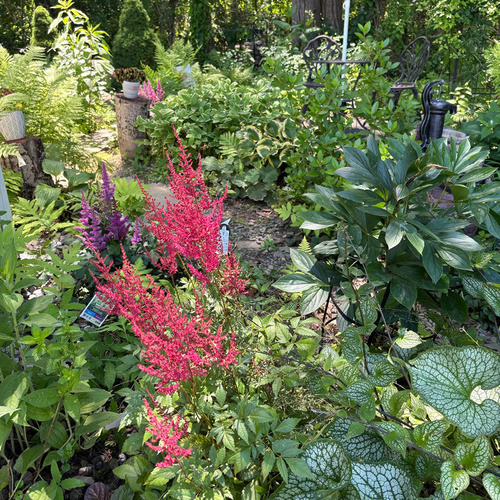
Hi GPODers!
We’re back in Rotterdam, New York, today to see more fabulous plant combinations in Maxine Brisport’s peak-season garden. Be sure to check out Part 1 if you missed it yesterday, but if you’re ready to see more of Maxine’s incredible summer color, keep scrolling!
Our midsummer garden is a vibrant tapestry, a kaleidoscope of colors that erupts in every direction. Bright yellow cup plants stand tall, their cheerful faces attracting buzzing bees and fluttering butterflies. The sweet, heady perfume of roses mingles with the subtle scent of the lilies, creating an intoxicating aroma that fills the air. The gentle rustle of leaves in the breeze, accompanied by the chirping of birds, forms a natural soundtrack that enhances the peaceful ambiance. Every corner of the garden is overflowing with life, a testament to the abundance and joy of summer.
Thank you,
Maxine Brisport
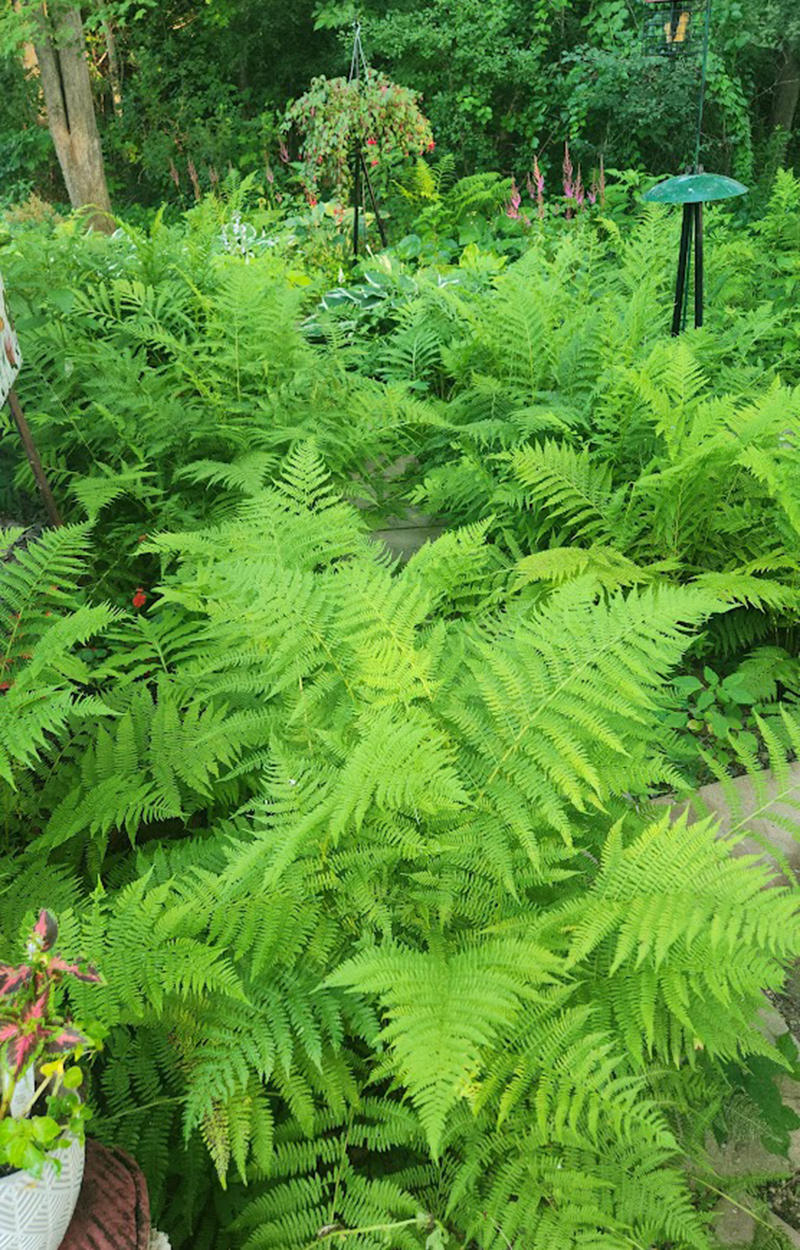 In yesterday’s post we covered many of Maxine’s outstanding flowers, with bursts of bright color everywhere. Today we’re shifting toward the shadier areas in Maxine’s garden. While there is still no shortage of color, there is also a bit more emphasis on interesting foliage. For instance, this mass planting of ferns creates a bright sea of green.
In yesterday’s post we covered many of Maxine’s outstanding flowers, with bursts of bright color everywhere. Today we’re shifting toward the shadier areas in Maxine’s garden. While there is still no shortage of color, there is also a bit more emphasis on interesting foliage. For instance, this mass planting of ferns creates a bright sea of green.
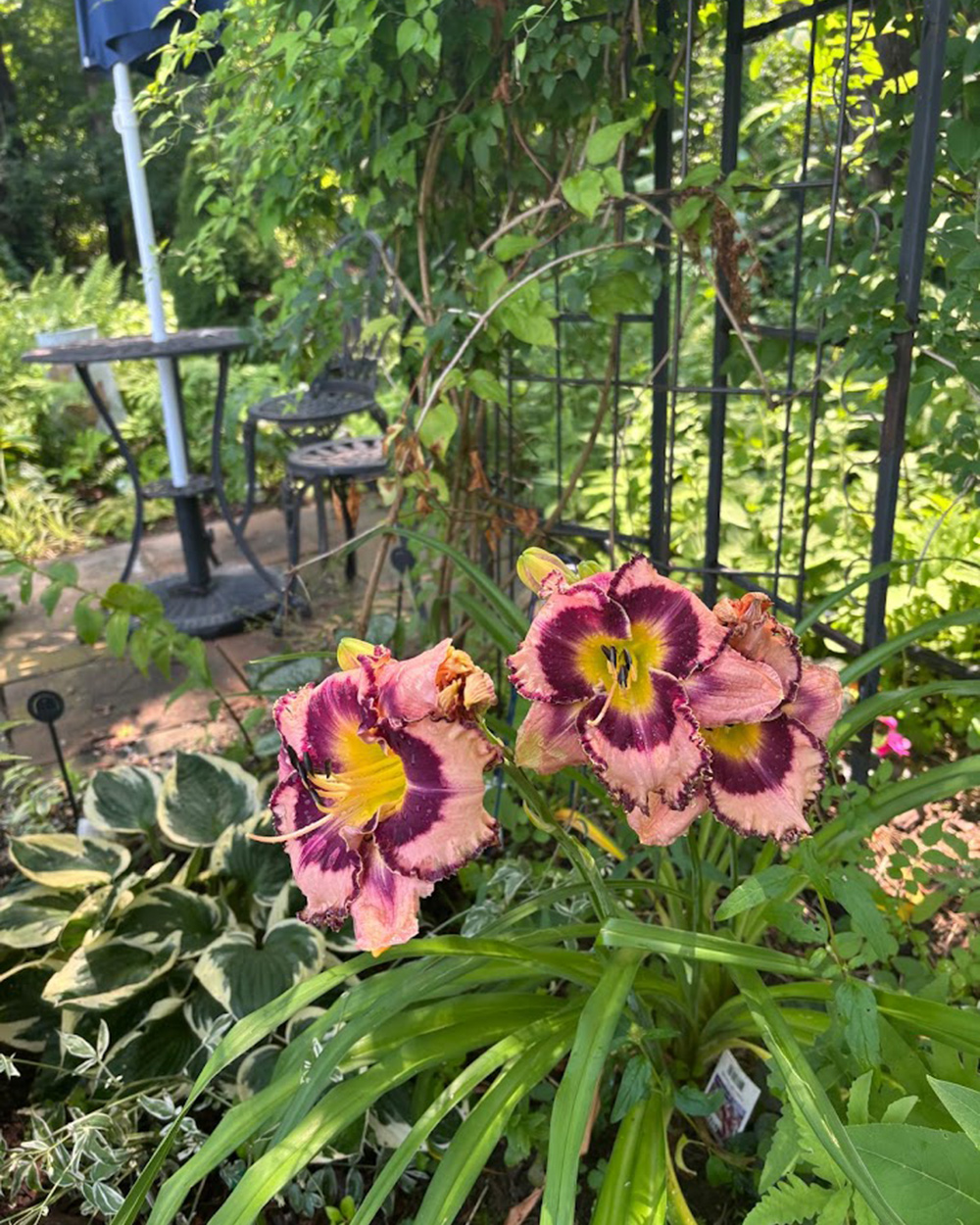 Flowers still pull focus, like this incredible Rainbow Rhythm® ‘Sound of My Heart’ daylily (Hemerocallis ‘Sound of My Heart’, Zones 3–9), but some outstanding variegated foliage makes for captivating companion plants.
Flowers still pull focus, like this incredible Rainbow Rhythm® ‘Sound of My Heart’ daylily (Hemerocallis ‘Sound of My Heart’, Zones 3–9), but some outstanding variegated foliage makes for captivating companion plants.
 Of course, who can resist a close-up of those stunning blooms?
Of course, who can resist a close-up of those stunning blooms?
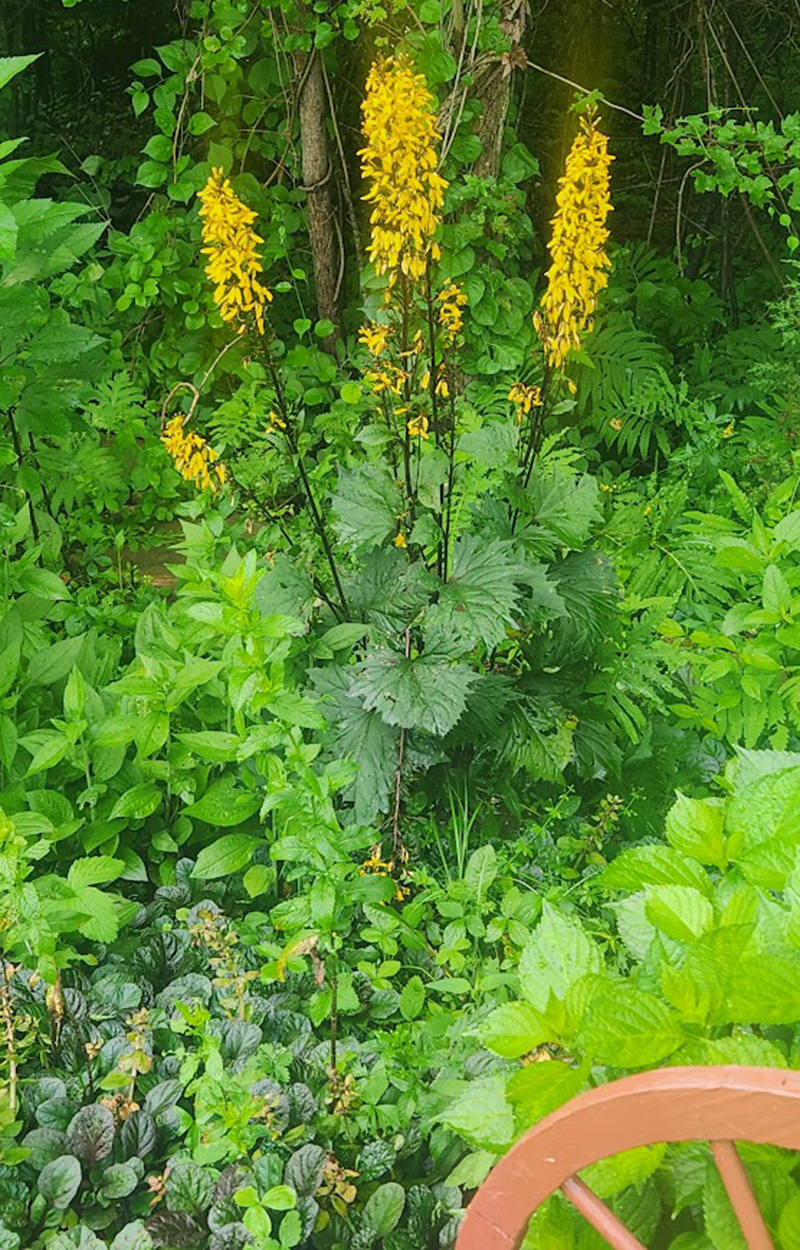 Even plants that provide bright pops of color, like the mustard yellow flowers of ‘Bottle Rocket’ leopard plant (Ligularia ‘Bottle Rocket’, Zones 3–9), also have fantastic foliage. The large, deeply serrated leaves of ligularias provide interest even when the plant isn’t flowering.
Even plants that provide bright pops of color, like the mustard yellow flowers of ‘Bottle Rocket’ leopard plant (Ligularia ‘Bottle Rocket’, Zones 3–9), also have fantastic foliage. The large, deeply serrated leaves of ligularias provide interest even when the plant isn’t flowering.
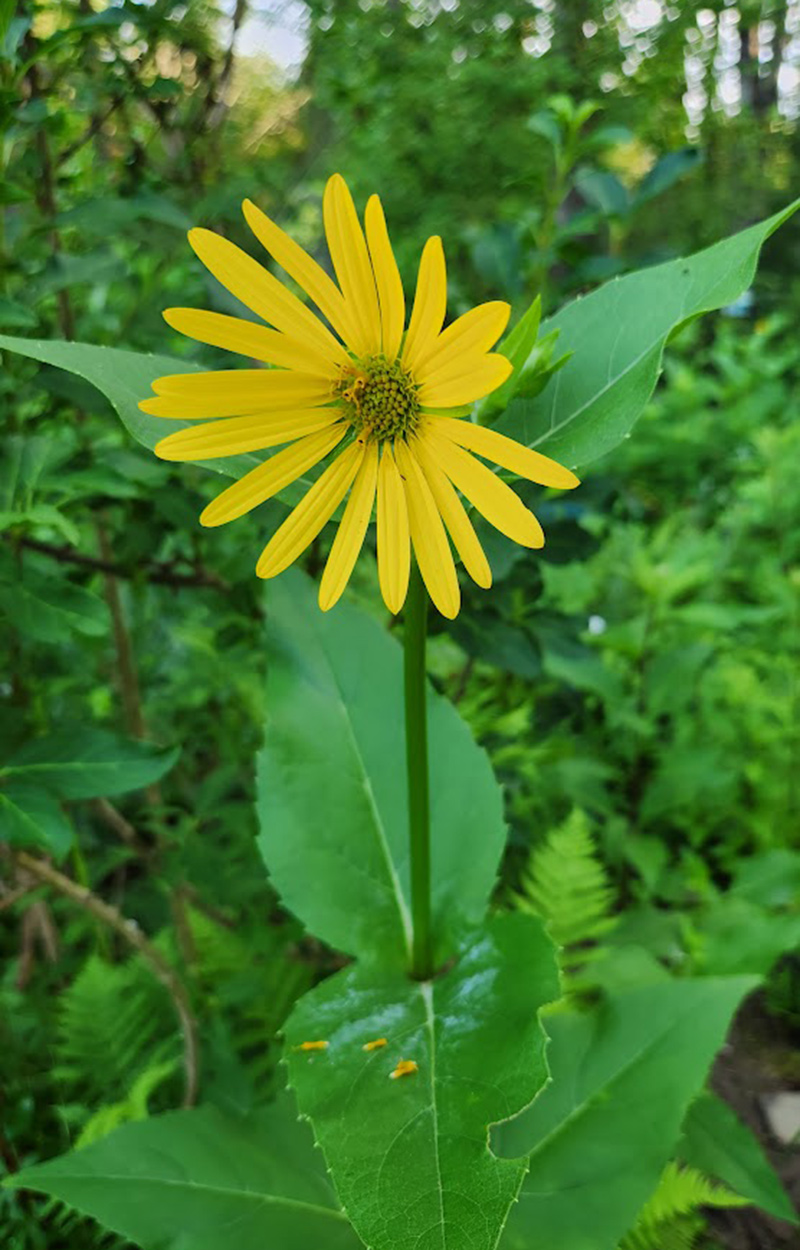 Next up is one of the adorable bright yellow cup plants (Silphium perfoliatum, Zones 3–9) Maxine mentioned in her introduction. These cheerful wildflowers are native to much of the Eastern United States and, as Maxine mentioned, will have bees and butterflies flocking to your garden.
Next up is one of the adorable bright yellow cup plants (Silphium perfoliatum, Zones 3–9) Maxine mentioned in her introduction. These cheerful wildflowers are native to much of the Eastern United States and, as Maxine mentioned, will have bees and butterflies flocking to your garden.
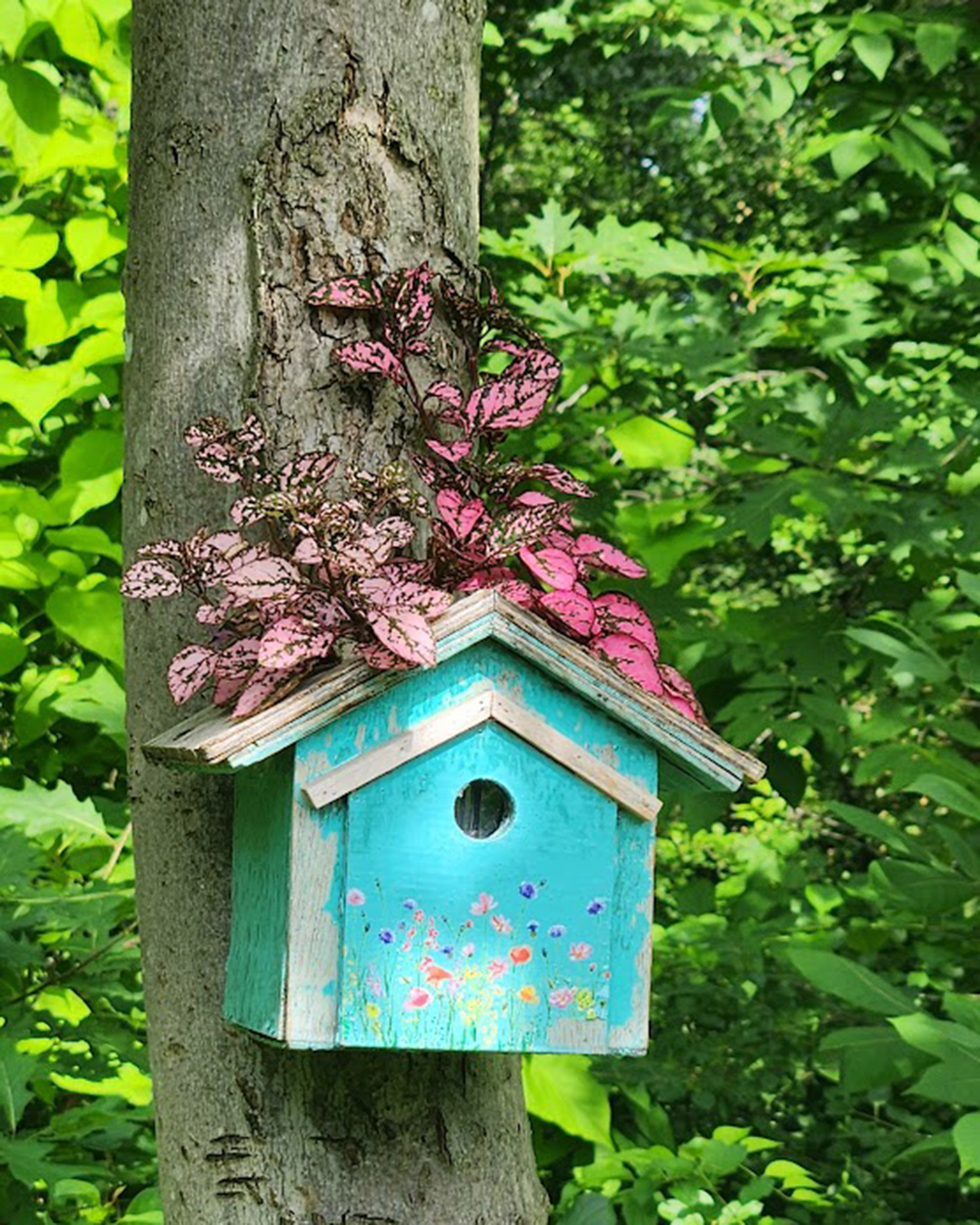 This adorable birdhouse that doubles as a planter is a genius creation! And a Hippo® Rose polka dot plant (Hypoestes phyllostachya ‘G14160’, Zones 10–11 or as an annual) is the perfect pick to add even more color in the shade beneath the tree canopy.
This adorable birdhouse that doubles as a planter is a genius creation! And a Hippo® Rose polka dot plant (Hypoestes phyllostachya ‘G14160’, Zones 10–11 or as an annual) is the perfect pick to add even more color in the shade beneath the tree canopy.
 For great plant pairings that will complement each other and thrive in similar conditions, consider looking at family members! Bright purple betony (Stachys officinalis, Zones 4–8) is similar in form to lambs’ ears (Stachys byzantina, Zones 4–8), making them good together, but vastly different colors provide enough contrast to make the pairing interesting.
For great plant pairings that will complement each other and thrive in similar conditions, consider looking at family members! Bright purple betony (Stachys officinalis, Zones 4–8) is similar in form to lambs’ ears (Stachys byzantina, Zones 4–8), making them good together, but vastly different colors provide enough contrast to make the pairing interesting.
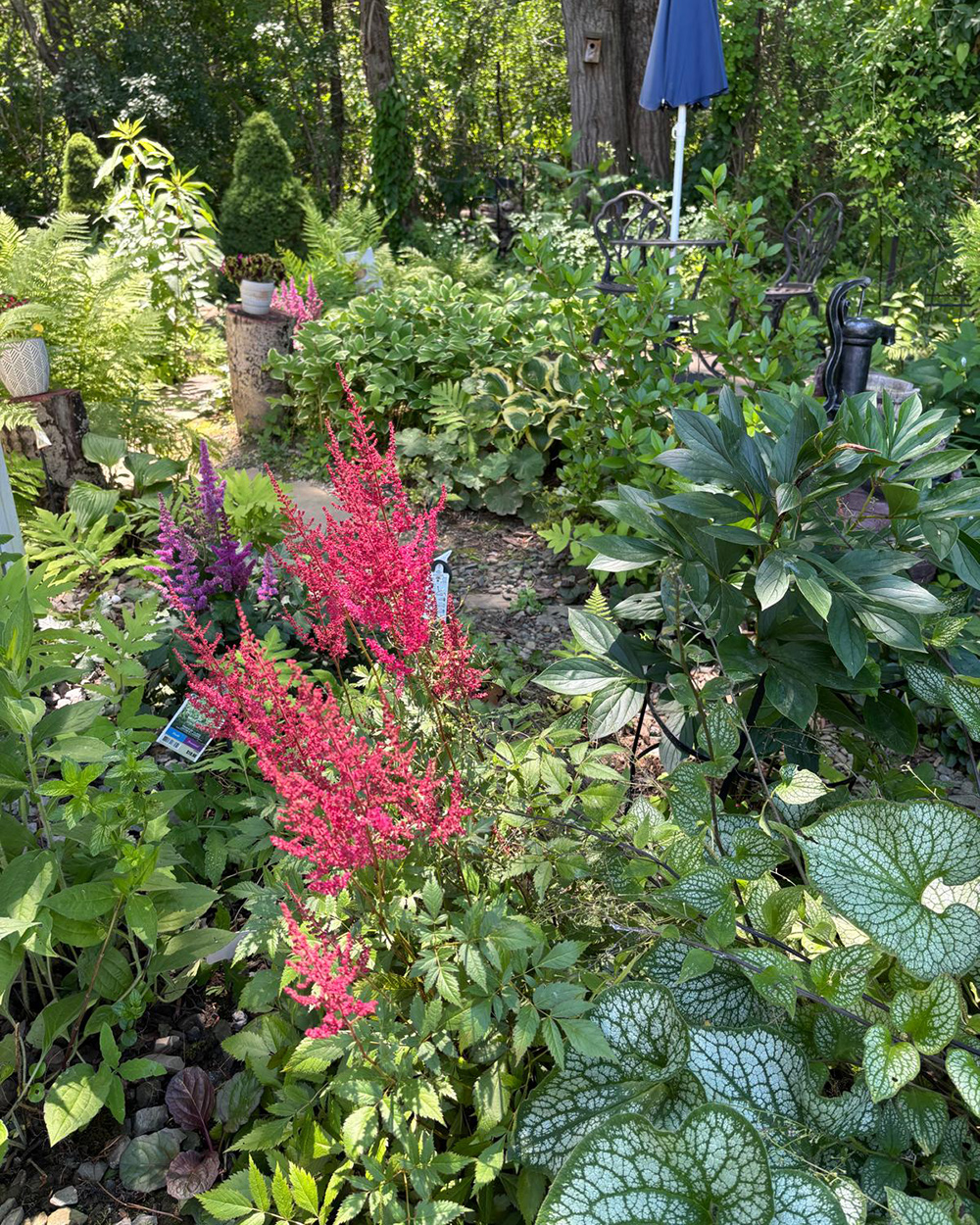 Near a small, shady seating area in her garden, Maxine has a sprinkling of astilbe that send shoots of vivid hues throughout the dense greenery. A bright pink cultivar in the foreground is backed up by a beautiful purple variety, and a peek of a lighter pink specimen can barely be seen in the background.
Near a small, shady seating area in her garden, Maxine has a sprinkling of astilbe that send shoots of vivid hues throughout the dense greenery. A bright pink cultivar in the foreground is backed up by a beautiful purple variety, and a peek of a lighter pink specimen can barely be seen in the background.
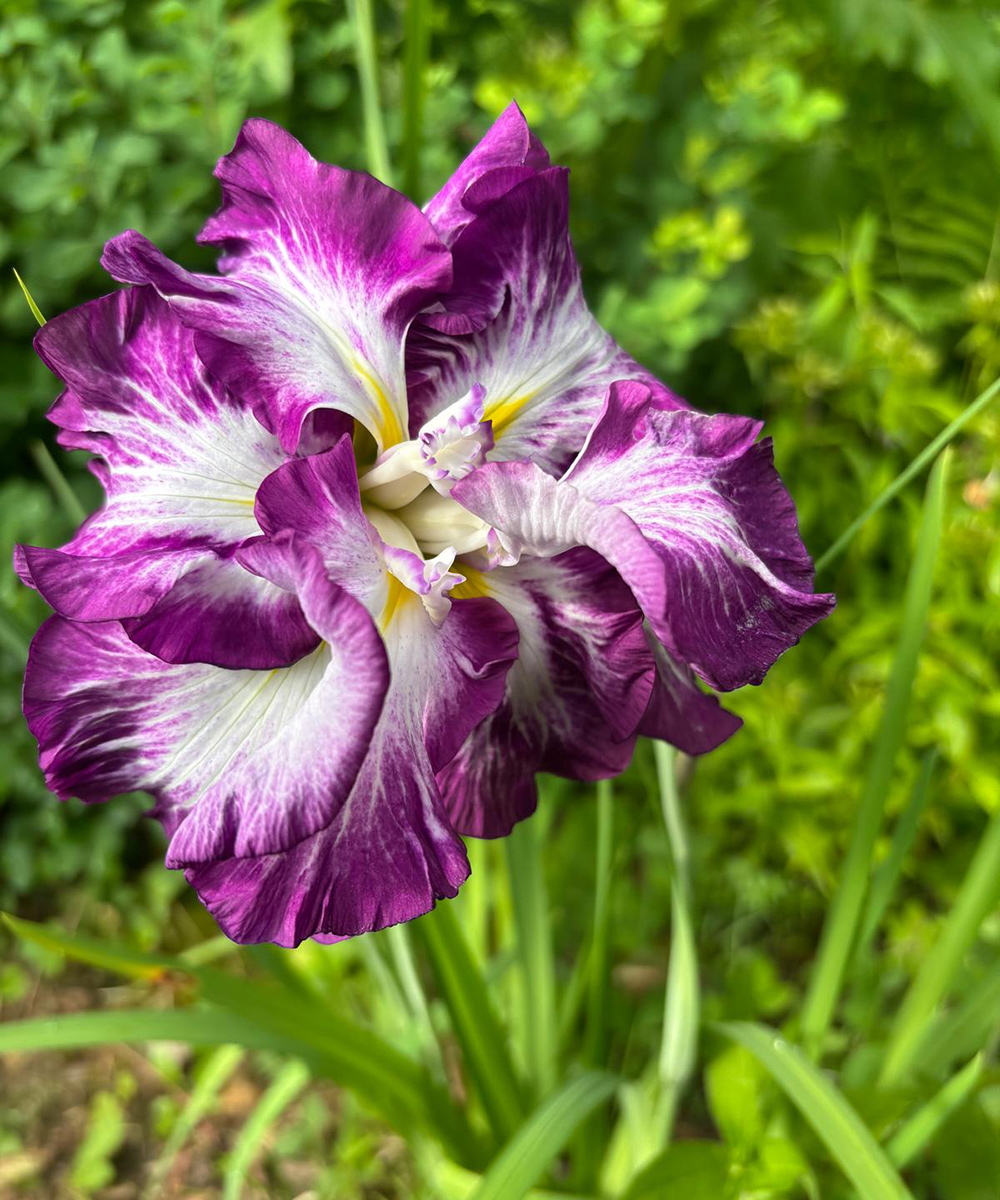 Last, but certainly not least, a close up of an extraordinary ‘Lion King’ Japanese iris (Iris ensata ‘Lion King’, Zones 4–9). Photos never do justice to size or scale, and these ornate blooms can grow up to a huge 7 to 8 inches. What a magical final flower to leave us on.
Last, but certainly not least, a close up of an extraordinary ‘Lion King’ Japanese iris (Iris ensata ‘Lion King’, Zones 4–9). Photos never do justice to size or scale, and these ornate blooms can grow up to a huge 7 to 8 inches. What a magical final flower to leave us on.
Thank you so much for this stunning garden update, Maxine! There is so much in your garden to admire, but it is the incredible use of color that captures my attention every time.
What hues have erupted from your peak-season garden this year? Maxine’s array of blooms is an impressive feat, but I know she’s not the only GPODer that cultivates an incredible collection of color this time of year. Keep our celebration of summer color going, and consider sharing photos of your mid-summer designs with Garden Photo of the Day! Follow the directions below to submit photos via email, or send me a DM on Instagram: @agirlherdogandtheroad.
We want to see YOUR garden!
Have photos to share? We’d love to see your garden, a particular collection of plants you love, or a wonderful garden you had the chance to visit!
To submit, send 5–10 photos to [email protected] along with some information about the plants in the pictures and where you took the photos. We’d love to hear where you are located, how long you’ve been gardening, successes you are proud of, failures you learned from, hopes for the future, favorite plants, or funny stories from your garden.
Have a mobile phone? Tag your photos on Facebook, Instagram, or Twitter with #FineGardening!
Do you receive the GPOD by email yet? Sign up here
Fine Gardening Recommended Products
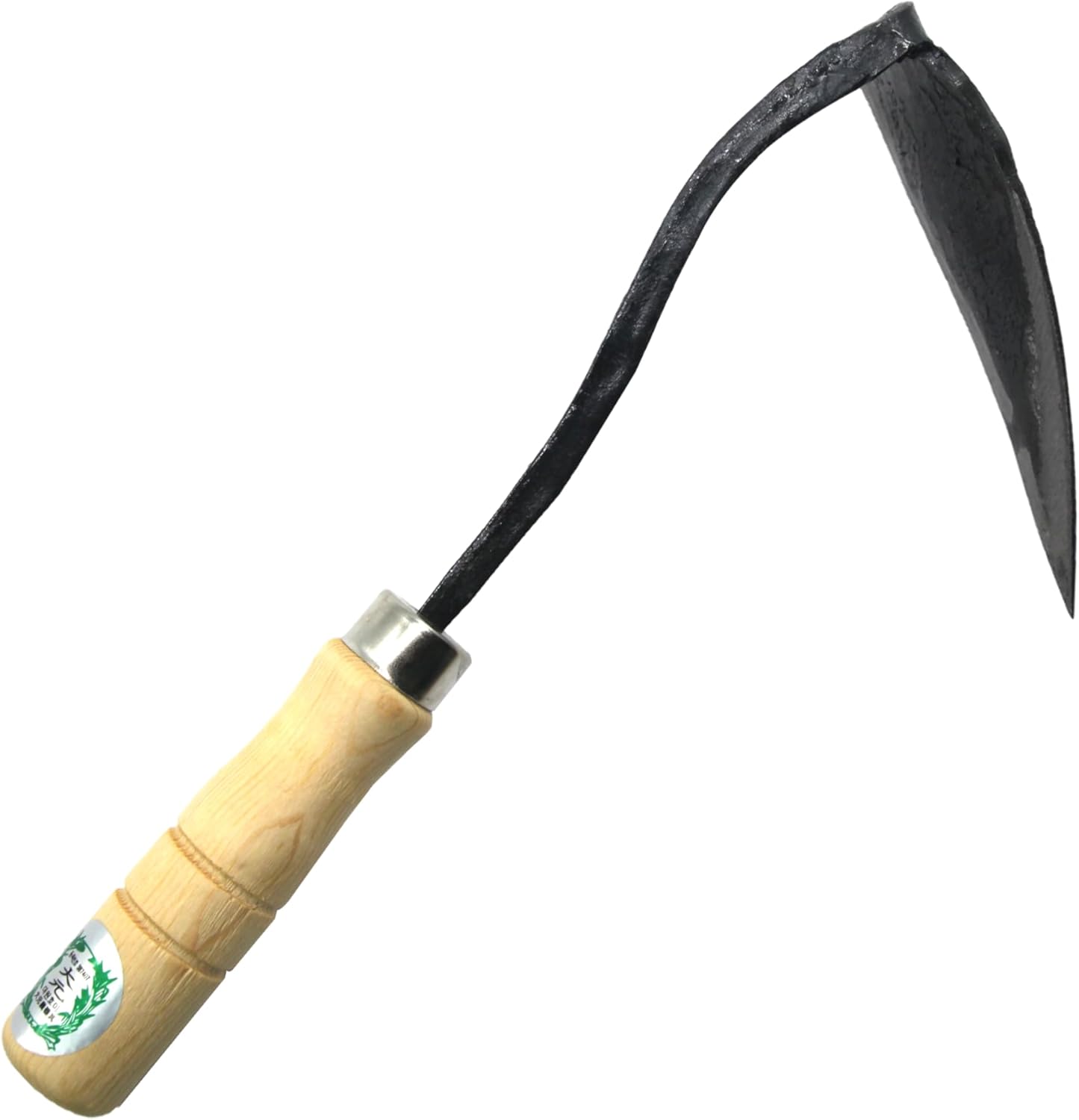
Ho-Mi Digger – Korean Triangle Blade
Fine Gardening receives a commission for items purchased through links on this site, including Amazon Associates and other affiliate advertising programs.
Versatile Tool: The Easy Digger Korean Triangle Blade Ho Mi Ho-mi is a versatile gardening tool designed for leveling and digging in home and garden settings. Efficient Design: Its unique triangular blade shape allows for easy soil penetration and efficient leveling of garden beds or landscaping areas. Durable Construction: Crafted with sturdy materials, this tool ensures long-lasting performance and reliability.
Ergonomic Handle: The comfortable handle provides a secure grip, reducing hand fatigue during extended use. Compact Size: Its compact design makes it easy to maneuver in tight spaces and store when not in use.
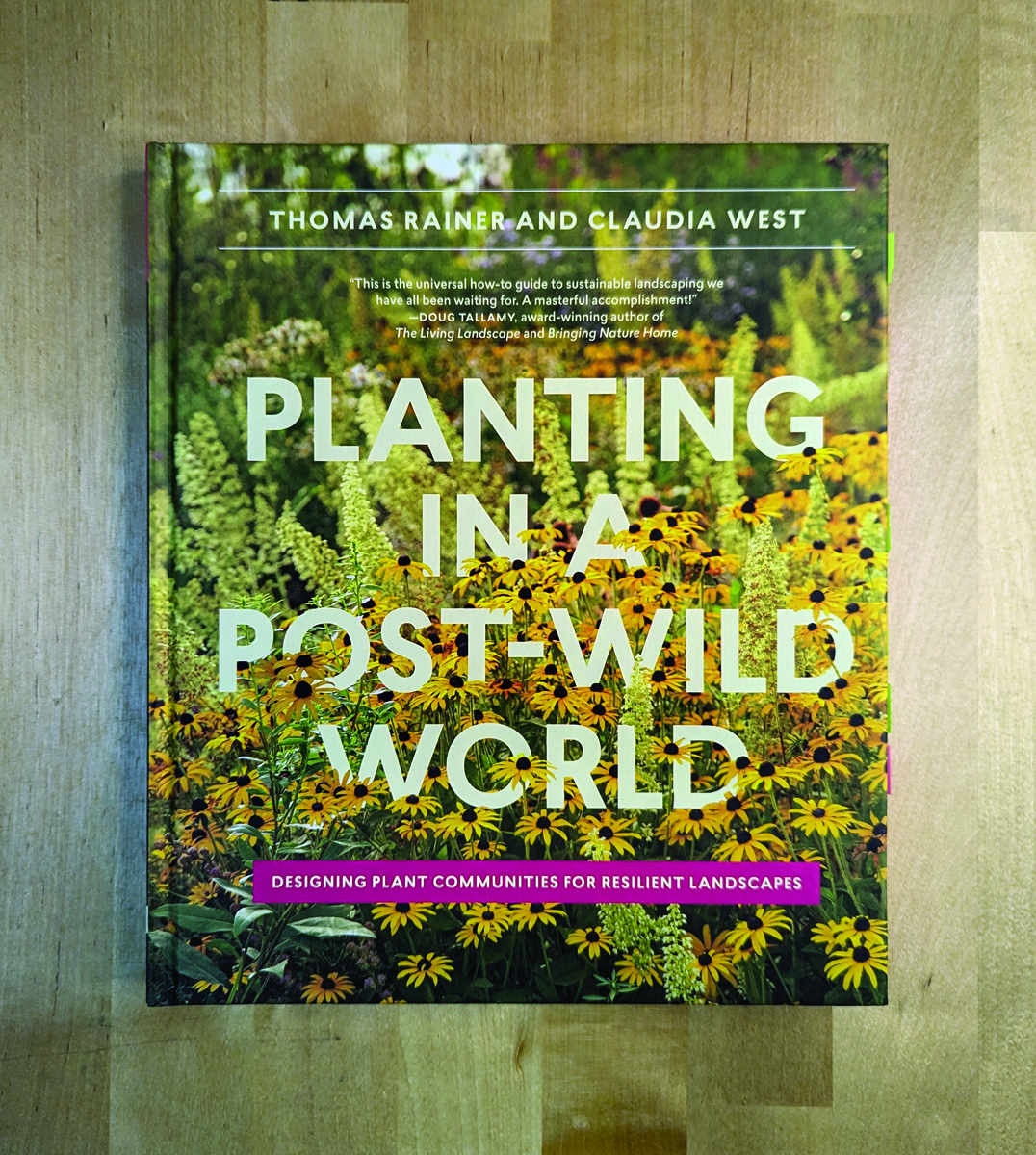
Planting in a Post-Wild World: Designing Plant Communities for Resilient Landscapes
Fine Gardening receives a commission for items purchased through links on this site, including Amazon Associates and other affiliate advertising programs.
Featuring gorgeous photography and advice for landscapers, Planting in a Post-Wild World by Thomas Rainer and Claudia West is dedicated to the idea of a new nature—a hybrid of both the wild and the cultivated—that can nourish in our cities and suburbs.
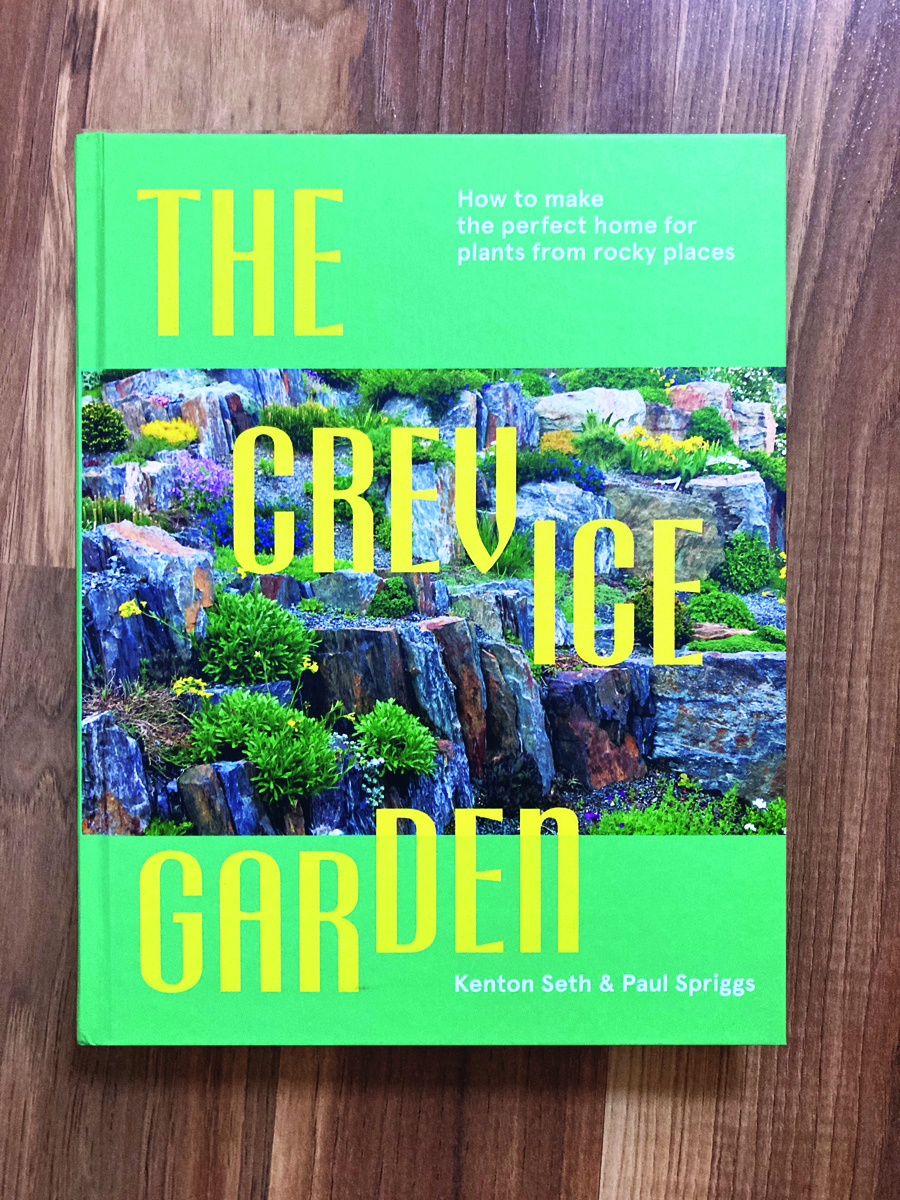
The Crevice Garden: How to make the perfect home for plants from rocky places
Fine Gardening receives a commission for items purchased through links on this site, including Amazon Associates and other affiliate advertising programs.
A crevice garden replicates the environmental conditions of mountain tops, deserts, coastlines, and other exposed or rocky places on earth. These striking garden features provide perfect conditions for the plants native to these far-off places, bringing the cultivation of these precious gems within everybody’s reach.








